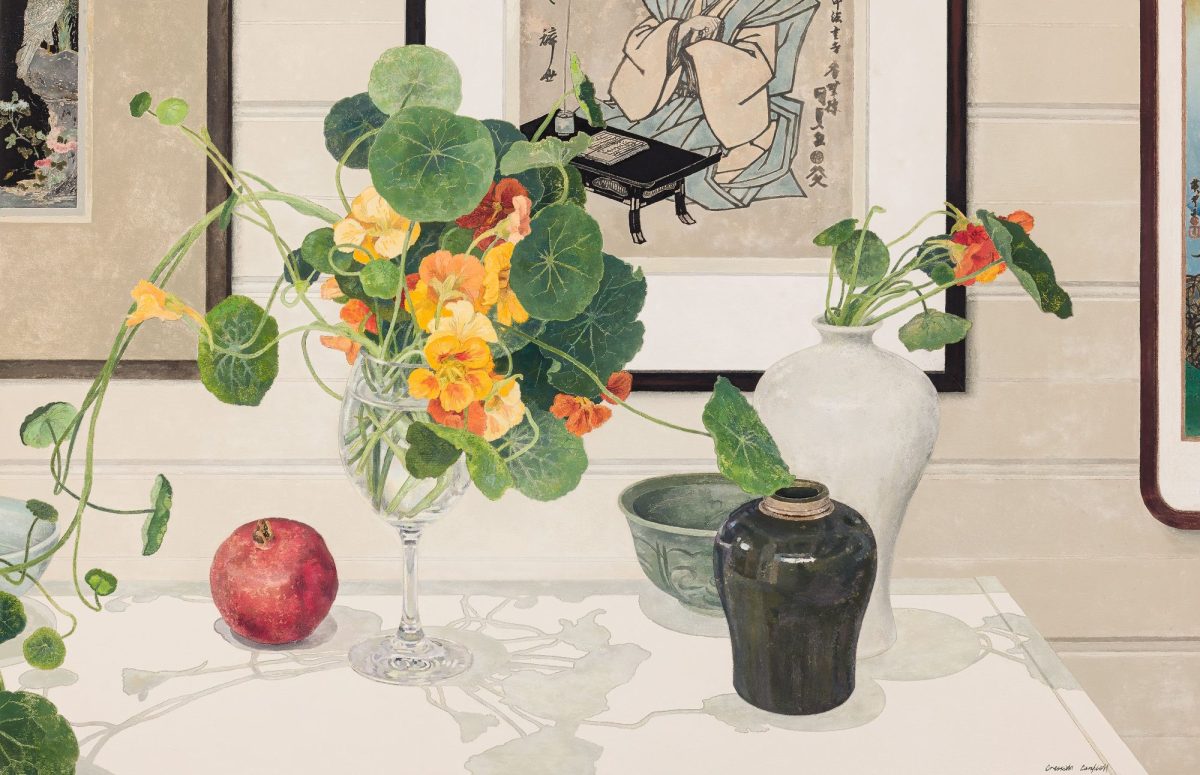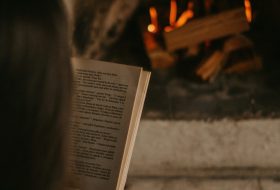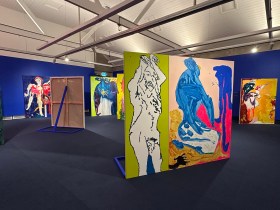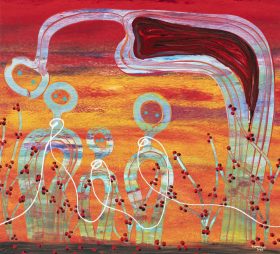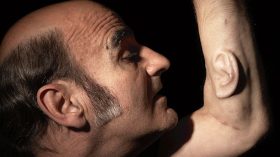The Geelong Gallery, about an hour’s drive south-west of Melbourne, sits nestled in the arts precinct of Victoria’s largest regional town – its original neoclassical style façade sitting comfortably alongside contemporary additions.
In her catalogue essay on the exhibition Cutting Through Time – Cressida Campbell, Margaret Preston and the Japanese Print, currently showing at the Geelong Gallery, Senior Curator Lisa Sullivan, reflects on the notion of time by drawing on T S Eliot’s poem ‘Burnt Norton’. This poetic analogy of the ‘philosophical threading’ and ‘endlessly entwining’ element of time – the meeting of past, present and future – presents the visitor with a thought-provoking starting point from which to view the exhibition.
Sullivan curates with a deft touch, allowing the works to speak to each other across time and space. Housed in the older building, the exhibition consists of three generously dimensioned spaces with polished floorboards and walls that vary from darker to lighter shades of grey, creating an air of calm.
In the middle space, which acts as the connecting thread of past and present, are the ukiyo-e (floating world) prints from Japan’s Edo period (1615-1868). In this time of economic growth and cultural flourishing, the woodblock print evolved as an egalitarian art form depicting the varied and fleeting aspects of everyday life. The colourful, bold designs of the ukiyo-e artists and their use of experimental and innovative stylistic devices – such as image-cropping, asymmetry, receding perspective, use of silhouette and reflections in water, along with atmospheric effects – can be seen in the works of Australian artists Cressida Campbell and Margaret Preston, which sit either side of this central room.
A subtext to this space is the thoughtful curatorial, which presents, through a range of prints, the evolution of the craft of ukiyo-e over a 200-year period, providing the viewer with greater contextual understanding of its development.
The exhibition opens with the work of contemporary painter and printmaker Cressida Campbell and spans the period from mid 1980s to the present. Unlike the ukiyo-e artists’ multi-block prints, Campbell’s work is carved from one block on which she paints thickly with watercolour before letting it dry, then spraying with water and hand-printing with a roller to produce a single print. Both woodblock and single print are on display.
In early works such as Pyrmont (1984) and Glebe (1985), the first a woodblock print in watercolour, the second a woodblock painting in water colour, Campbell draws off ukiyo-e stylistic devices such as vertical lines to divide the picture plane, as seen in Torii Kiyonaga’s The third month, cherry blossom viewing at Mt Asuka (1784) as well as the incorporation of the outside world with the interior spaces such as Evening snow at Hira (1814-29) by Kikugawa Eizan, .
Campbell’s beautifully conceived 2012 painted woodblock, Shelf still life, subtly makes use of devices such as asymmetry and cropping through the placement of a vase of boldly coloured nasturtiums and other assorted vessels in front of sections of prints from her own ukiyo-e collection.
Ionic columns frame the entrance to the third room and a large photograph of Margaret Preston in her studio, which dominates the middle of the far wall. One of Australia’s most recognised modernist artists of the earlier 20th century, she, like Campbell, was heavily influenced by the works of the Japanese woodblock artists. Through her travels Preston initially came into contact with the Japanese aesthetic and the ukiyo-e print, which spread to Europe and Australia after Japan opened its borders in the latter part of the 19th century.
In her black ink and hand-coloured woodblock print The boat, Sydney Harbour (c. 1920), Preston reflects the influence of works such as Utagawa Hiroshige’s Distant View of Moon Mountain from Mogami River, Dewa Province (1853-56) in her use of Prussian blue and warm oranges along with the suggestion of mountains in the background, a device to create a sense of distance. The subtle use of asymmetry and sections of bold colour in Katsushika Hokusai’s Peonies and butterfly (c. 1832) can also be noted in Preston’s hand-coloured prints such as Begonia (c. 1935) and Tea-tree and Hakea petiolaris (1936) in which Preston crops arrangements of native flowers and presents them from interesting perspectives.
Like the Japanese artists, Preston preferred to hand-print, as does Campbell, using a roller, instead of a printing press or the Japanese baren – a small disc with flat bottom and knotted handle. Like their earlier Japanese influences, both artists’ work favours a flattened picture plane, allowing the decorative to dominate.
In Campbell’s beautifully conceived Poppies (2005), a watercolour print and carved woodblock mirror each other – a subtly patterned vase of brightly coloured nasturtium bursts from its opening, while a patterned bowl on a patterned tablecloth is placed to one side in the background giving a shallow sense of space.
In Preston’s Illawarra lilies and waratahs (1929), a black outlined hand-coloured print of native flowers in a vase also presents an air of joyfulness and, like Campbell, a limited sense of perspective through the sketch-like outline of a tabletop. A floral sprig, at the base of the vase, is the only suggestion of asymmetry. Although both Preston and Campbell spent time studying the ukiyo-e technique in Japan, neither adopted the style fully, bringing their own cultural zeitgeist to their art-making.
Unobtrusive wall panels and text labels support the works, along with a handsome catalogue (copies available to visitors in the exhibition spaces) with essays by Dr Mae Anna Pang (Asian art historian and former Senior Curator of Asian art at the NGV) and Sullivan, as well as a Q+A with Cressida Campbell and Sullivan.
Read: Book review: The Changing Room, Belinda Cranston
The exhibition is beautifully conceived and executed, and enables the viewer to cut quietly through time to explore the importance of ukiyo-e woodblock art and its influence on two significant female Australian artists and their legacy for future generations.
Cutting Through Time – Cressida Campbell, Margaret Preston, and the Japanese Print will be exhibited until 28 July 2024
Tickets: $9-$20.
